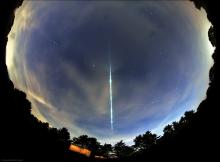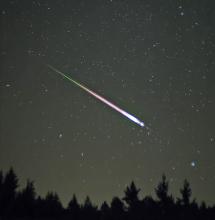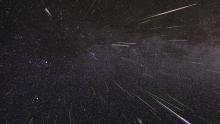Listen to today's episode of StarDate on the web the same day it airs in high-quality streaming audio without any extra ads or announcements. Choose a $8 one-month pass, or listen every day for a year for just $30.
You are here
Ursid Meteors
Winter begins in the northern hemisphere today. And tonight, as if to celebrate the new season, the Ursid meteors will be at their peak.
In most years, the Ursids produce no more than a few meteors an hour. On rare occasions, though, they can produce a hundred per hour, making the Ursids one of the best meteor displays of the year. Such outbursts took place in 1945, ’86, ’93, and 2000. And no one knows what will happen tonight.
The meteors form when debris from Comet Tuttle burns up in the upper atmosphere. The comet is named for American astronomer Horace Tuttle, who discovered it in 1858. But the meteor shower it spawns was discovered only in the last century.
The meteors appear to radiate from the constellation Ursa Minor, the little bear. Some of its stars form the Little Dipper, with the tip of its handle marked by the North Star. Because the meteor radiant is so far north, the farther north you are, the more meteors you’re likely to see. In fact, the very best place for meteor watching in the U.S. may be Alaska.
The best time to observe the shower is before sunrise tomorrow — something that’s easy to do when the nights are so long.
Although the Ursids probably will be weak, they could stage a surprise outburst. So if you’re up early tomorrow, why not get away from city lights and watch for yourself? There won’t be any moonlight to interfere, and you just might catch sight of some falling stars.
Script by Ken Croswell





